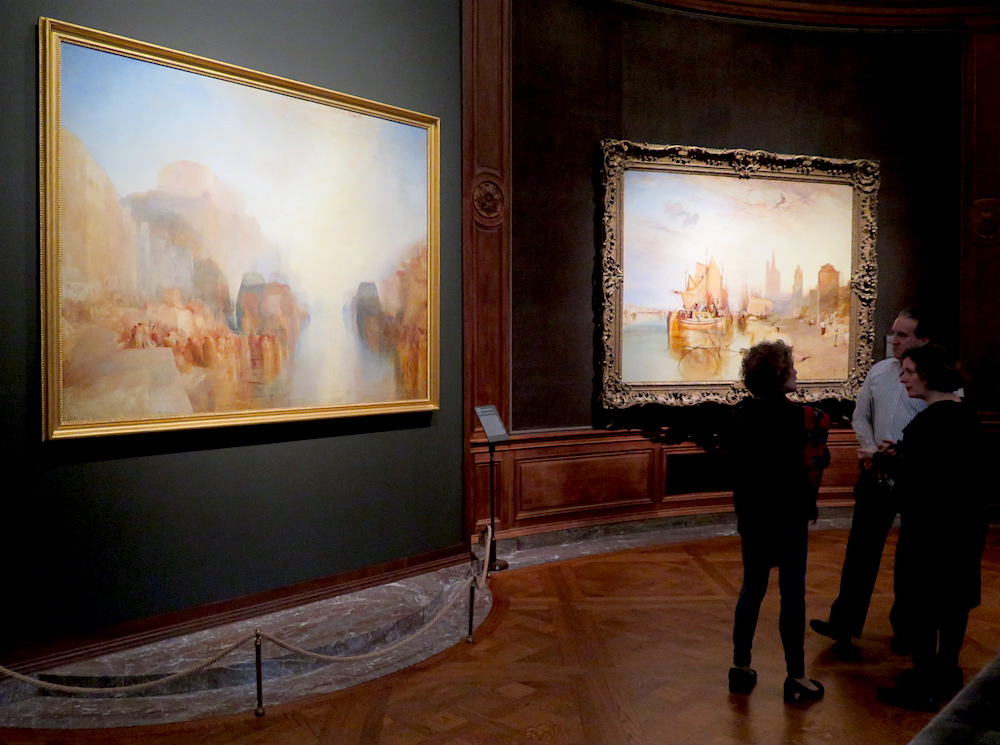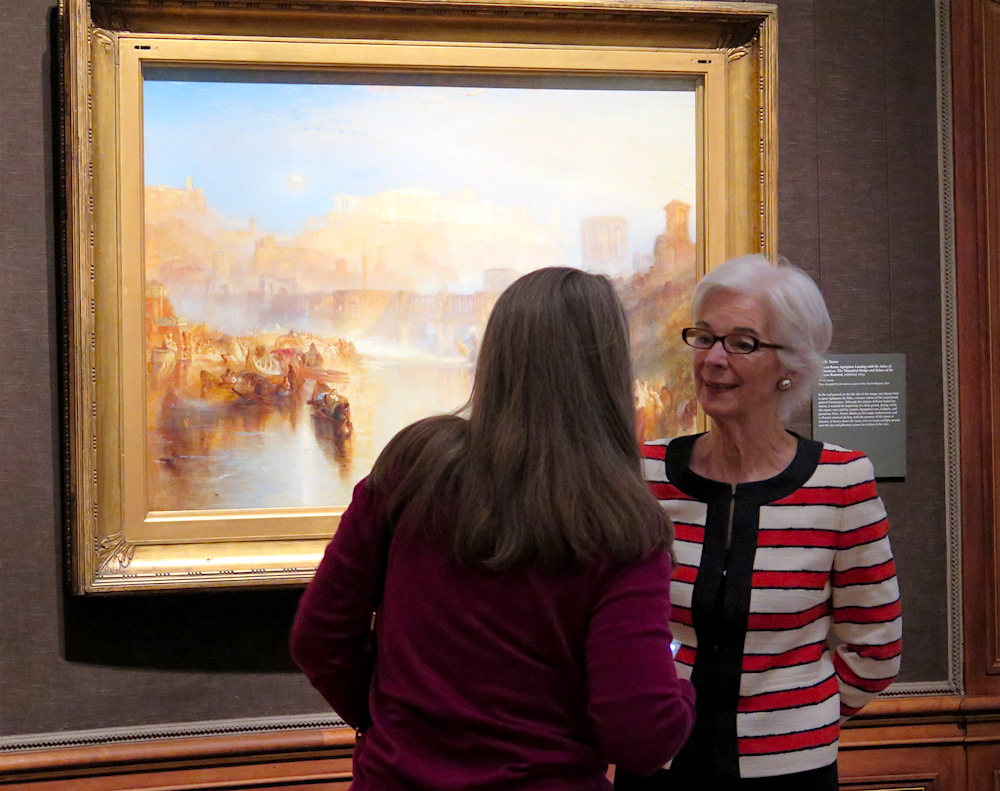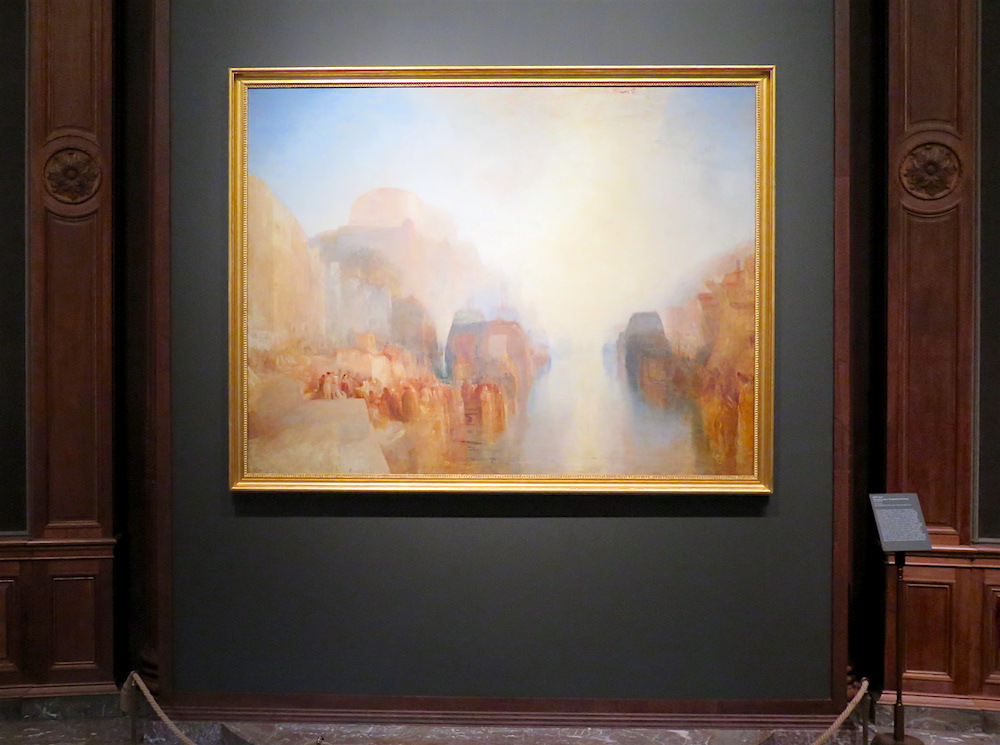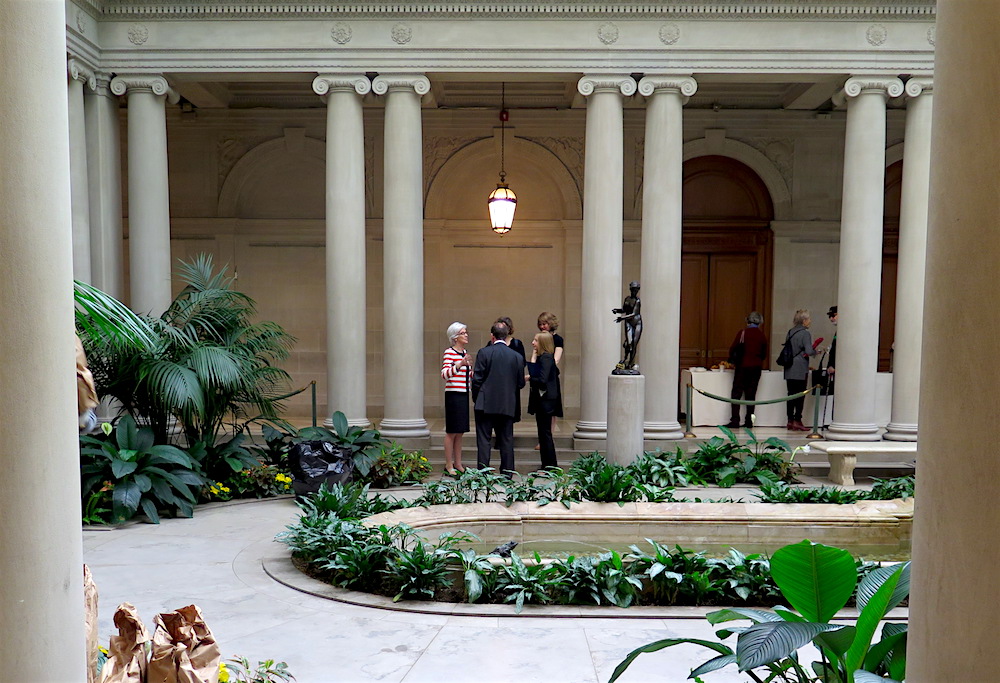
J.M.W. Turner, The Harbor of Brest: The Quayside and Château, ca. 1826–28 and Cologne, the Arrival of a Packet-Boat: Evening, 1826 (photo credit ©MRNY)
Some decades ago, as a university student studying in Europe, I stood mesmerized in front of a painting by J.M.W. Turner (1775-1851) that hung at Tate in London. As a budding aesthete, I had dabbled in watercolors—and it was something of a dream fulfilled to witness the work of one of the world’s greatest watercolor artists.
Something similar occurred at the new Turner exhibition currently on display at the Frick Collection. With its focus on a trio of grand-scale port scenes, Turner’s Modern and Ancient Ports: Passages through Time examines a transitional moment in the career of Britain’s most revered seascape painter of the 19th century. For the first time, Turner’s monumental Harbor of Dieppe and his equally grand Cologne hang alongside an unfinished work on loan from Tate, London that depicts the harbor of Brest in Brittany. To enter into the Frick’s majestic Oval Room is to feel as if you are gliding into a European harbor in the mid-1820s.

Susan Grace Galas, Senior Curator, The Frick Collection, in front of J.M.W. Turner’s Ancient Rome; Agrippina Landing with the Ashes of Germanicus. The Triumphal Bridge and Palace of the Caesars Restored, exhibited 1839, oil on canvas (photo credit ©MRNY)
Acquired by Henry Clay Frick more than a century ago, the two completed works were painted in the aftermath of the Napoleonic Wars when Turner and his contemporaries crossed the Channel to rediscover the Continent after two decades of travel restrictions. Turner depicts the technological revolutions of the period, such as the steamboat and improved roads, which gave rise to the development of mass tourism and an industry of graphic publications—all of which parallels our own peripatetic desires during an unsettled moment in world history.
The trio of large-scale canvases is complemented by three paintings painted later in the decade that continue Turner’s exploration of the port as a setting for homecoming and exile. The artist’s signature luminosity becomes ever more noticeable in his focus on light and color, marking these canvases as a harbinger of Turner’s journey to the brink of abstraction.
Coined by curator Ian Warrell, the phrase “poetic topography” describes Turner’s fascination with the fusing of observation with imagination. By utilizing high-keyed pigments newly available to artists, Turner transcended the conventions of seascape painting, rendering his canvases with a refulgent brilliance.
In the gallery adjacent to the Oval Room, a selection of Turner’s watercolors reveal his lifelong obsession with light and atmosphere. Though his oils were often greeted with controversy, Turner’s watercolors were universally celebrated, providing him with a steady income. His unconventional methods infused the paper with heightened visual effects; consider, for example, Sun-Rise: Whiting Fishing at Margate (1822) where Turner positions the viewer directly in front of the sun which fills the scene with an extraordinary radiance. Mesmerizing in its depiction of a daily miracle, it’s nearly impossible to look away.
Juxtapose this work with a watercolor painted more than 20 years later, Château de Dieppe (1845), by which time Turner has moved even further away from topographical accuracy in favor of atmospheric effect. With this relatively small watercolor, Turner heralds the advent of modernism.
Organized by Susan Grace Galassi, Senior Curator at The Frick Collection; leading Turner scholar Ian Warrell; and Joanna Sheers Seidenstein, the Frick’s Anne L. Poulet Curatorial Fellow, Turner’s Modern and Ancient Ports: Passages through Time is accompanied by a fully illustrated catalogue, published in association with Yale University Press. The exhibition remains on view at the Frick Collection through 14 May 2017.






